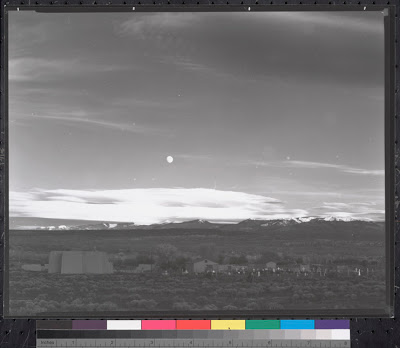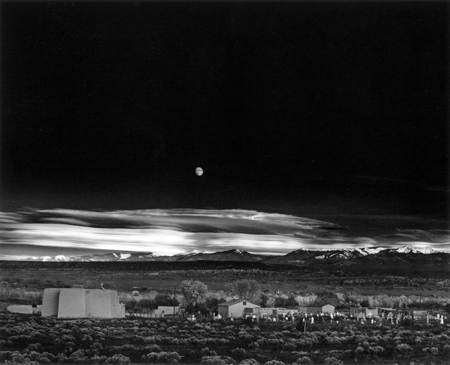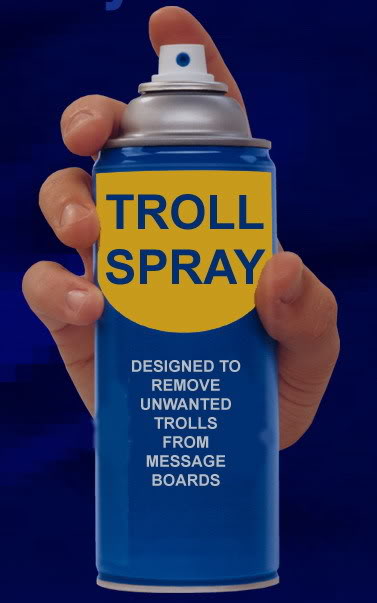Art
Jan 11, 2019 05:15:57 #
joer wrote:
Any generalizations are bound to be wrong some of the time. On what planet do professionals not PP.
That post was all about prioritising. I pointed out that professionals have to prioritise technical standards** whereas the hobbyist doesn't have to dance to that tune if he/she doesn't want to. As far as their profession goes, professional photographers will not prioritise creativity unless their particular profession requires it, whereas many if not most hobbyists will see photography primarily as a creative outlet, and will see PP as an extension of that creative process.
As far as PP goes, I would expect most professionals to be well versed and competent because PP can be used to produce technically superior results.
(** "Professionals have to prioritise technical standards" - OK, that's a generalisation, but how many professionals are going to thrive (or even survive) if their technical standards are seriously lacking?).
Jan 11, 2019 05:57:09 #
Linda, what an excellent picture!
Most importantly your attitude is one of tolerance, and encouragement, which is a delightfully fresh breeze here on the Ugly Hedgehog site. Thank you!!!
Bravo Zulu, JimmyT Sends.





Most importantly your attitude is one of tolerance, and encouragement, which is a delightfully fresh breeze here on the Ugly Hedgehog site. Thank you!!!
Bravo Zulu, JimmyT Sends.
Linda From Maine wrote:
Agree 100% but these types of conversations on UHH... (show quote)





Jan 11, 2019 06:04:23 #
Jeffcs
Loc: Myrtle Beach South Carolina
I’m in a photography (camera) club and an image to be in our monthly contest must
Be of the makers own and must have come out of their camera
So it you have a nice landscape without a good sky you can put in a better sky providing you shot the sky and the tree you added must have also come from your camera
Be of the makers own and must have come out of their camera
So it you have a nice landscape without a good sky you can put in a better sky providing you shot the sky and the tree you added must have also come from your camera
Jan 11, 2019 06:05:37 #
this debate is so common and repetitive I almost didn't comment.
For reporting and documentary purposes the major objective is to demonstrate the facts. It would be completely unacceptable to 'doctor' the image to exaggerate what it is intended to show. Other than cropping and maybe improving shadow detail the image should be 'as is'. Attempts to deliberately exaggerate are effectively lying.
That's not to say that such images cannot be emotive and artistic - I think of the iconic image of US marines raising the flag over Iwo Jima among others.
Once you move into artistic interpretation then all constraints are off and the mind's eye of the photographer is all that matters.
Perhaps curiously, both genres have the same objective in the viewer of the image - to 'see' what the photographer saw.
One problem occurs when the latter is passed of as the former. I recently saw some images advertising holidays in Iceland. I've been there, and it does have some of the most stunning scenery in a relatively small land mass. But I can guarantee that the overprocessed, almost HDR image of one huge waterfall, with shadows falling towards the amazing sun and sky, is nothing like that! I guess we probably expect much advertising photography to be economic with the truth. Perhaps indirectly, that is what the SOOC advocates are rebelling against?
For reporting and documentary purposes the major objective is to demonstrate the facts. It would be completely unacceptable to 'doctor' the image to exaggerate what it is intended to show. Other than cropping and maybe improving shadow detail the image should be 'as is'. Attempts to deliberately exaggerate are effectively lying.
That's not to say that such images cannot be emotive and artistic - I think of the iconic image of US marines raising the flag over Iwo Jima among others.
Once you move into artistic interpretation then all constraints are off and the mind's eye of the photographer is all that matters.
Perhaps curiously, both genres have the same objective in the viewer of the image - to 'see' what the photographer saw.
One problem occurs when the latter is passed of as the former. I recently saw some images advertising holidays in Iceland. I've been there, and it does have some of the most stunning scenery in a relatively small land mass. But I can guarantee that the overprocessed, almost HDR image of one huge waterfall, with shadows falling towards the amazing sun and sky, is nothing like that! I guess we probably expect much advertising photography to be economic with the truth. Perhaps indirectly, that is what the SOOC advocates are rebelling against?
Jan 11, 2019 06:21:30 #
Linda From Maine wrote:
Agree 100% but these types of conversations on UHH... (show quote)
Linda, this is called cognitive dissonance -
"In the field of psychology, cognitive dissonance is the mental discomfort (psychological stress) experienced by a person who simultaneously holds two or more contradictory beliefs, ideas, or values. This discomfort is triggered by a situation in which a person’s belief clashes with new evidence perceived by that person. When confronted with facts that contradict personal beliefs, ideals, and values, people will find a way to resolve the contradiction in order to reduce their discomfort." - Festinger, L. (1957). A Theory of Cognitive Dissonance. California: Stanford University Press.
Three cognitive biases in particular are components of dissonance theory. The bias that one does not have any biases, the bias that one is "better, kinder, smarter, more moral, and nicer than average," and confirmation bias. - Tavris, Carol; Aronson, Elliot (2017). "Why We Believe -- Long After We Shouldn't". Skeptical Inquirer. 41 (2): 51–53. Retrieved 5 November 2018.
This helps to explain why people hold on to their incorrect beliefs in the face of logic, facts, and alternate explanations.
Or as a good friend of mine used to say, "denial is not just a river in Egypt."
Jan 11, 2019 06:25:40 #
billnikon
Loc: Pennsylvania/Ohio/Florida/Maui/Oregon/Vermont
ngrea wrote:
Reading a Hog conversation that gọt a little warm ... (show quote)
Art by definition is:
Art is a diverse range of human activities in creating visual, auditory or performing artifacts (), expressing the author's imaginative, conceptual ideas, or technical skill, intended to be appreciated for their beauty or emotional power.
So, it appears, post secondary processing, is ART.
Jan 11, 2019 06:33:50 #
dave.m wrote:
....Perhaps indirectly, that is what the SOOC advocates are rebelling against?
Most if not all SOOC advocates are doing their thinking from a narrow and highly personalised viewpoint. I suspect that most of them have their roots in film where getting it right in camera was not far from being a necessity (at least financially) rather than just being a nice idea. And on top of that, the possibilities for creativity with film were very limited compared to what PP gives us with digital, and in the days of film, creativity in processing was seen by many as a low priority side issue that would be pursued by only a few dedicated and technically capable individuals. As a consequence, anything other than very basic post processing (by today's standards) was generally perceived as a technical extravagance. I suspect that with some people, something of that mind-set persists to this day.
Jan 11, 2019 06:35:15 #
Bipod wrote:
You've got it backwards: the problem is that post... (show quote)
An example of "straight" photography from one of the guys you named as an example. So much for the notion that a non-manipulated image is art and one that is manipulated isn't.
The truth is that art can exist at both ends of the spectrum - I have seen amazing artistry with and without processing. While making art without post processing can be harder, that does not make it better - Ken Rockwell, who takes pride in the claiming that his images are straight out of the camera - https://www.kenrockwell.com/. By the same token, post processing beyond what looks good, aka Captain Kimo - https://captainkimo.com/hdr-photography-gallery/, Trey Ratcliffe - https://stuckincustoms.smugmug.com/.
Another way to look at it is to just examine how fine artists have interpreted the world around them - rarely is it photo-realistic, though for a while there has been a movement that does just that - https://www.creativebloq.com/illustration/examples-photorealism-10135012 and some pretty incredible work comes out of that style.
SOOC is NOT the only way to take pictures, but neither is full-tilt post processing. Both are interpretations - and both can be amazing. Both can be obscene aberrations as well.
For the record - I prefer the "highly manipulated" version of Moonrise Over Hernandez below. Though the first un-manipulated image is strong example of exactly what GIRITC really means.
.
SOOC aka unmanipulated Contact Print

Non-SOOC aka "not 'art' according to some"

Jan 11, 2019 06:52:54 #
tdekany wrote:
The end result has nothing to do with what camera ... (show quote)
He's just another kind of artist . . .
And best dealt with using this product:
.

Jan 11, 2019 06:58:33 #
Gene, I try to learn something new every day, however, this is a lot for one sitting, Haha. I think that your reply to Linda may do me for several days, grin. Also, I couldn't agree more with your findings! JimmyT Sends.







Gene51 wrote:
Linda, this is called cognitive dissonance - br ... (show quote)







Jan 11, 2019 07:07:29 #
dsmeltz wrote:
.....three groups have been at the forefront of moving technology ahead. The defense industry, scientists and artists.......
Now you can include kids playing computer games
 .
.Jan 11, 2019 07:12:39 #
Technology, human imagination, intelligence, experience, skill, and perception meld as one to produce a photographic result.
ngrea wrote:
Reading a Hog conversation that gọt a little warm ... (show quote)
Jan 11, 2019 07:34:50 #
Jan 11, 2019 07:42:36 #
The negative is comparable to the composer's score and the print to its performance. Each performance differs in subtle ways. Ansel Adams
Simple.
Simple.
Jan 11, 2019 07:45:44 #
If you want to reply, then register here. Registration is free and your account is created instantly, so you can post right away.





